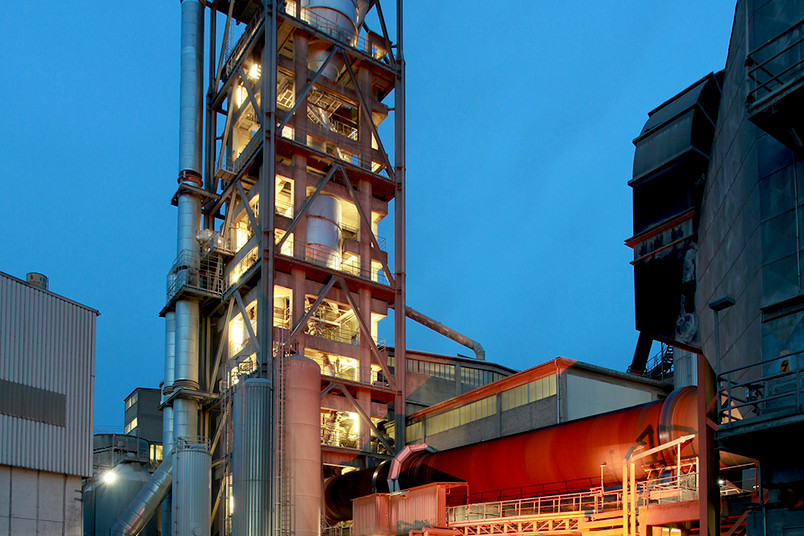- Ruhr-Universität Bochum

Making the cement industry climate-neutral
The German Federal Ministry of Economics and Climate Protection is funding the project as part of the "Application-oriented non-nuclear R&D in the German government's 7th energy research program" measure in the area of "Technologies for the CO2 circular economy."
The concrete solution path taken by Fraunhofer UMSICHT, Leuchtstoffwerk Breitungen, Phoenix Zementwerke Krogbeumker and RUB is called Power-to-Chemicals. Renewable energies such as wind power are used to convert CO2 and water into carbon monoxide and hydrogen via electrolysis. Mixtures of these two substances - known as synthesis gases - are then used to produce the desired chemical products by means of further catalytic conversion processes.
Wanted: robust and poisoning-resistant catalysts.
The biggest hurdle: CO2 released from cement plants must be extensively purified and conditioned for further processing. "For example, catalyst poisons, dust and other impurities must be removed," says Dr. Kai junge Puring of Fraunhofer UMSICHT. "This is a challenge both technically and economically."
The project partners' goal is therefore to create a new process route that can also be adapted by other cement plants. "Ideally, we want to use the CO2 waste gas streams directly to produce the synthesis gases with the help of renewable energies and waste heat sources - without any complex upstream purification and conditioning," says Dr. Anne Schmidt from Leuchtstoffwerk Breitungen. "For this, we need robust and poisoning-resistant catalysts that are both stable over the long term and economical."
Im Fokus der Forschenden stehen daher sulfid-, nitrid- und phosphidbasierte Materialien. They are very stable to typical catalyst poisons such as sulfur, but have not yet been systematically investigated as potential catalysts for syngas production from CO2 or for subsequent syngas conversion to olefins and higher alcohols. "We want to change that and are aiming to set up a lab-scale process in the next 36 months," explains Prof. Dr. Ulf-Peter Apfel from RUB.
System integration through multi-criteria evaluation methods
The process is followed by system integration: how can the finished power-to-chemicals concept be integrated into existing cement plant structures? "To answer that, we have to identify, model and evaluate specific site conditions - i.e. infrastructure aspects, surrounding wind and photovoltaic plants or potential customers for the target products," says Dr. Sebastian Stießel from Fraunhofer UMSICHT.
"In addition, we need to develop new business models for marketing CO-based products, which we extract from the exhaust gases, and bring them into line with existing value chains," adds Marcel Krogbeumker of Phoenix. To this end, new methods for systemic, multi-criteria evaluation are being developed as part of the project. In addition to purely technical and economic points, this also includes ecological, regulatory, acceptance and site-specific aspects.
From CO2 to olefins and higher alcohols.
All these steps are grouped into work packages and clearly distributed: Ruhr-Universität Bochum and Leuchtstoffwerk Breitungen are focusing on catalyst synthesis and characterization as well as up-scaling. Fraunhofer UMSICHT is dedicated to thermal and electrocatalysis and couples both processes. Phoenix schließlich übernimmt Prozessgasanalytik und -bereitstellung sowie – gemeinsam mit dem Fraunhofer-Institut – die Systemintegration.
"Together, we are working out an economical way to produce olefins and higher alcohols from the released CO2," says Dr. Heiko Lohmann of Fraunhofer UMSICHT, outlining the objectives of CO2-Syn. "They play an important role for industry as basic chemicals or alternative fuels." For example, the olefin ethylene is an important ingredient in the chemistry for the production of plastics such as polyethylene or polystyrene. Ethylene is currently produced on the basis of fossil raw materials such as natural gas. The higher alcohols are also important chemical value products. They are used, for example, as solvents and thinners for paints or as fuel additives.
